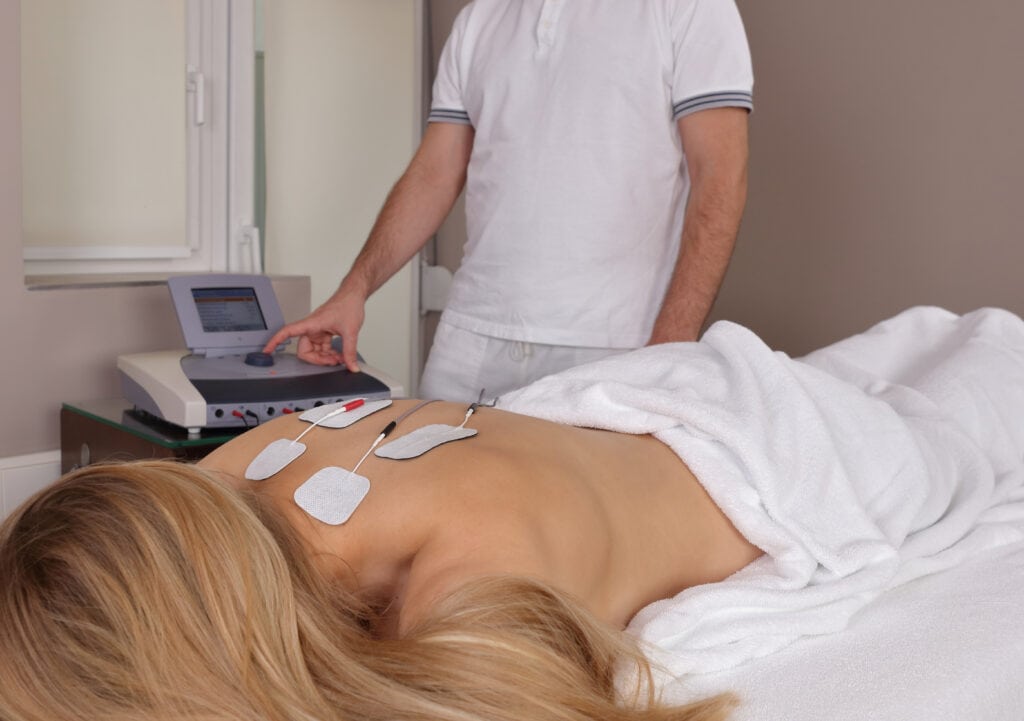Pain is a common symptom in the United States, affecting over 100 million adults yearly. In the past decade, there has been a surge of interest in neuromodulation therapy to manage pain and improve function. This treatment involves implanting medical devices that stimulate nerves to block pain signals from reaching the brain.
What is neuromodulation?
Neuropathic pain is chronic joint pain that affects the nervous system, usually caused by nerve damage. It can be treated with neuromodulation, which uses electrical currents to block pain signals from reaching your brain.
Neuromodulation is often used with other treatments, such as medication and physical therapy. It’s also used for many other types of chronic pain, including rheumatoid arthritis or diabetic neuropathy (nerve damage).
What are the types of Neuromodulation?
Deep Brain Stimulation
Deep brain stimulation (DBS) is a noninvasive device that uses electrical pulses to target regions in the brain responsible for movement and other functions. The treatment is most commonly used to treat Parkinson’s disease but can also be used as an alternative therapy for epilepsy and depression.
Transcranial Direct Current Stimulation
Transcranial direct current stimulation (TDCS) uses an electrode on the scalp to apply varying amounts of electricity below the cortex. This type of device has been shown to help treat some forms of depression and pain, but more research needs to be done before its effectiveness can be determined with certainty.
Which pain conditions can be treated with neuromodulation?
While neuromodulation is most commonly used to treat chronic pain, it can also treat acute pain. It’s important to note that neuromodulation does not replace other treatments, including physical therapy and medications.
Neuromodulation may help treat conditions like:
- Pain from cancer or other diseases (e.g., rheumatoid arthritis)
- Chronic inflammatory diseases such as ankylosing spondylitis or psoriatic arthritis
- Post-herpetic neuralgia caused by shingles
- What are the different kinds of devices used in neuromodulation treatment?
There are many different types of devices used in neuromodulation treatment. Each device has its benefits and risks, so it’s essential to understand these before deciding on a treatment plan for your pain.
Some devices are more invasive than others, so if you’re looking for an easy way out of pain or want the quickest results possible without having surgery (which can be dangerous), then you may find this option appealing.
However, suppose you want something that will give your brain some time to rest while still feeling numb. In that case, this might not be right for you because it requires more time spent under anesthesia than other neurostimulation treatments do—and there are risks involved with the anesthesia itself!
- Neurostimulation systems vary greatly depending on what type of device they use:
- Electrical stimulation through electrodes placed into specific areas like nerves or muscles.
- Drug delivery via injection into veins.
- Even surgery where doctors implant electrodes directly into their brains’ motor cortexes (where thoughts originate).
- These methods require careful planning by physicians before starting any therapy program since each method has advantages over another, depending on what type(s).
About Implanted Devices
Implantable devices are surgically implanted under the skin, which is more invasive than other options. They can treat many types of pain and are sometimes preferable to surgery because they don’t require an incision in your body or muscle damage.
For example, suppose you have back pain caused by spinal stenosis (narrowing). In that case, an implanted device could help you manage your symptoms by relieving pressure on nerve roots and reducing inflammation in the spine.
Choosing a device
Choosing a device is an essential step in the neuromodulation process. There are many factors to consider, including:
- Your condition
- Your lifestyle and budget
- Your medical history
Are there disadvantages or risks to using neuromodulation?
There are some disadvantages and risks to using neuromodulation:
- Implanted devices can be expensive.
- They can have side effects and be hard to remove.
- If you want to keep using neuromodulation after the initial treatment (which typically only lasts six months), you will have to have implants replaced every few years or so.
- Not everyone is a candidate for this type of treatment because it may not work for them or will only give intermediate results that don’t improve pain levels significantly enough for their needs.
Who should consider using neuromodulation?
- If you have tried other pain treatments without success.
- If you have had a spinal cord injury or stroke.
- If your doctor has told you that your nerve injury is progressing, no other interventions are available to slow its progression (for example, Botox).
- If your doctor has recommended neuromodulation as one of several options for treating chronic pain after surgery or trauma (like a car accident).
Moving Forward with Treatment Options
Choose the best treatment for you.
Do your research.
Ensure your doctor is well-trained in your treatment options and has experience treating pain, rather than just recommending another drug or procedure without discussing it. This can be especially important if you have been diagnosed with a rare condition that isn’t covered by insurance yet (or at all).
Make sure you are comfortable with your doctor, as well as any other members of the team who will be involved in this process—from nurses to physical therapists to surgeons who perform procedures on your body after surgery.
Chronic Pain Caused by Neuromodulation
There are many different ways to treat chronic pain that your doctor can help you find.
You may be wondering what neuromodulation is and how it can help you. Neuromodulation is a treatment for chronic pain that uses electrical impulses to suppress the activity of nerves in your body. Neuromodulation aims to reduce the amount or intensity of chronic pain signals that reach your brain so they don’t cause additional discomfort.
- Some devices used for neuromodulation include:
- Electrical stimulation electrodes (like TENS/EMS units)
- Electromyographic (EMG) electrodes
- Pneumatic compression pumps
Conclusion
The best way to navigate your treatment options is with an open mind, and it’s important to remember that every person’s pain experience is unique. You should also take all your questions to your doctor or a specialist who can help you understand what kind of treatment might work for you.
If you’re looking for a new clinic to treat your neuromodulation needs, Savvy Beauty and Wellness INC. is the place for you. We are a fully licensed and insured clinic dedicated to helping people in their quest to improve their quality of life through neuromodulation services.
We understand that everyone has different needs when it comes to their healthcare, and we work hard to tailor our services to fit your specific health goals. Whether it’s improved sleep or reduced pain, we can help!
Our team includes physicians, nurses, and therapists who will work with you individually to determine which treatments are right for you. If you’re unsure whether we offer something that would benefit you, don’t hesitate to ask—we’d love to hear from you!






